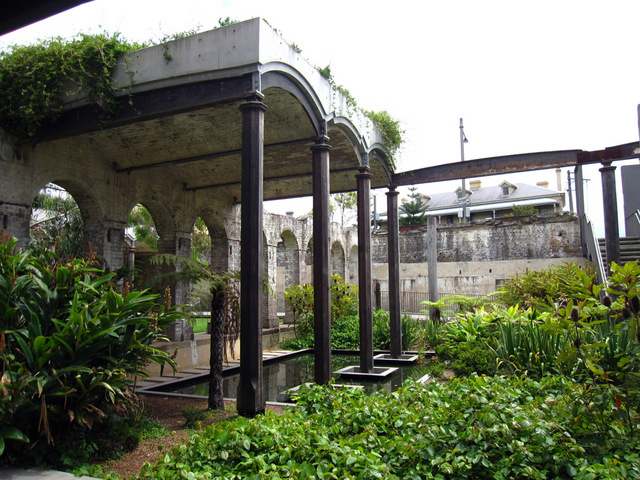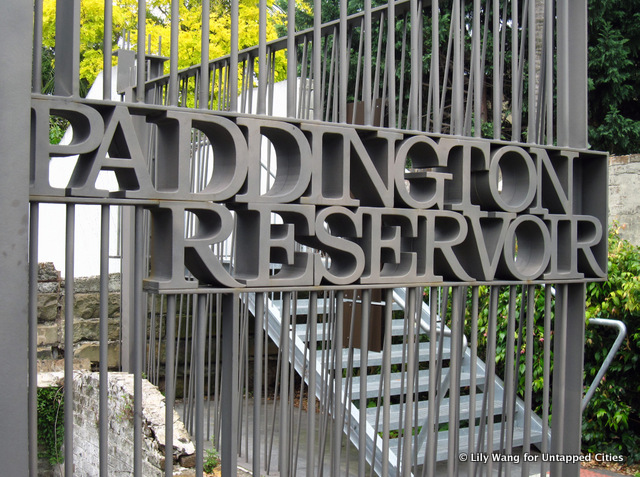From the high end to the high street, Sydney’s Oxford Street is known for showcasing the finest of Australian fashion. It has an eclectic mix of funk, creativity and sophistication. Incidentally, Oxford Street is also one of the main vehicular thoroughfare connecting Sydney’s eastern suburbs to the CBD. This makes Oxford Street a busy and noisy road.
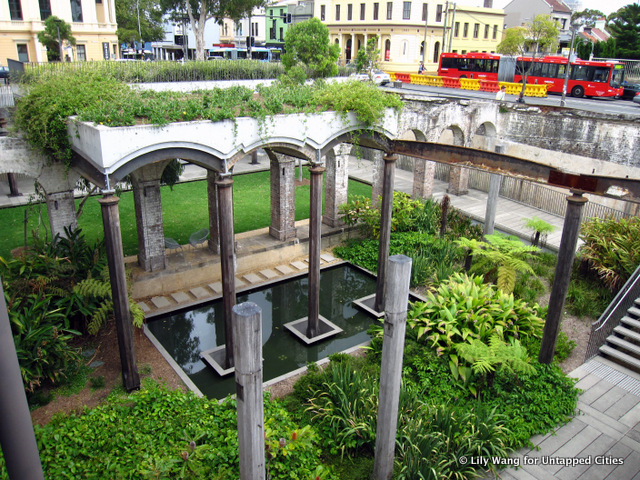
Tucked away beneath the street, is a little gem known as the Paddington Reservoir Gardens. This public park, which so often overlooked even by locals, offers a momentary relief from the quotidian hustle and bustle of Oxford Street.
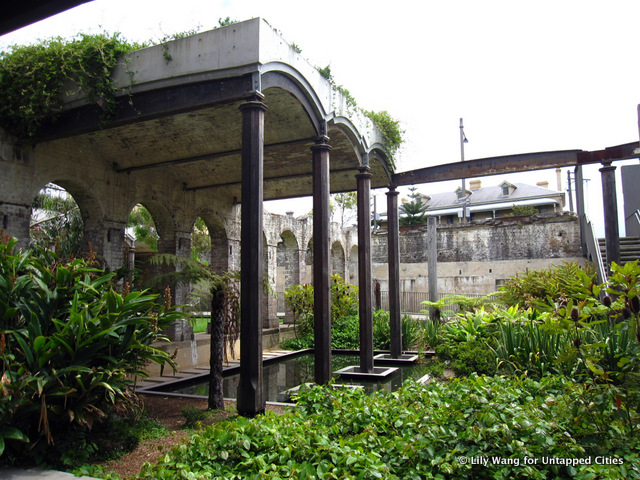
The Paddington Reservoir Gardens may be so overlooked because it appears understated. Admittedly from the street level, it looks like nothing more than a sunken ruin. However once you walk to the site’s edge and look down, you are greeted with a surprising garden.
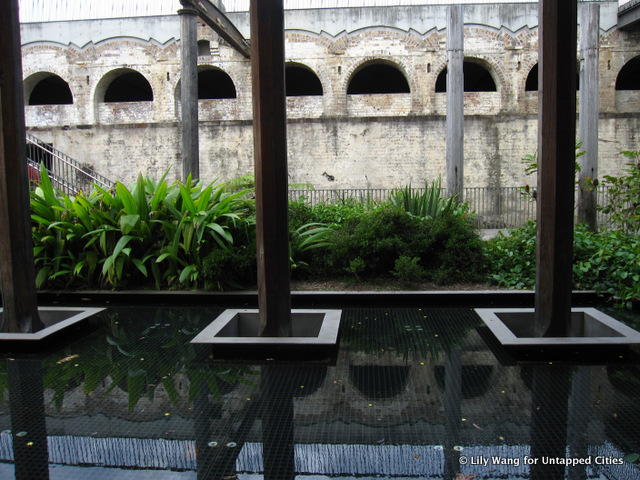
True to its name, Paddington Reservoir Gardens began as a water storage space for the early Sydney colony. This intended usage did not last long as Sydney’s population rapidly expanded beyond the Reservoir’s water carrying capacity. Further demise fell upon the site when half of the roof collapsed some year ago. Ironically, this is the reason why it is possible to see this part of the reservoir.
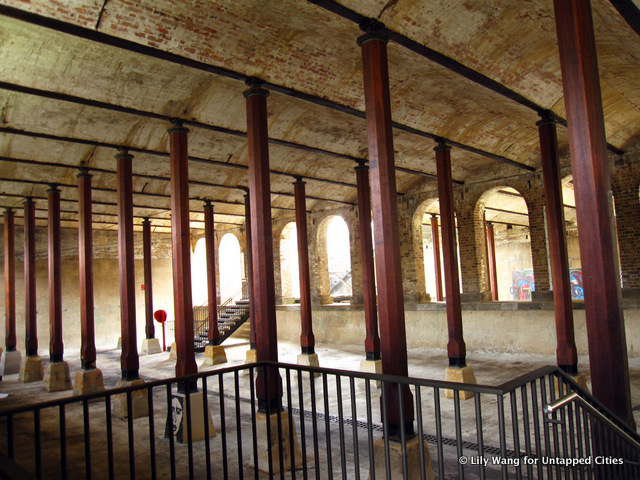
Since then, the garden has undergone a number of metamorphoses. Soon after the reservoir was decommissioned, it was used by the Water Board as storage space. Then for more than fifty years, the site was leased as a commercial motor garage. In the 1990s, recognition of the site’s heritage values compelled works to begin on its restoration. By this time, the reservoir was all but a distant memory to most Sydneysiders.
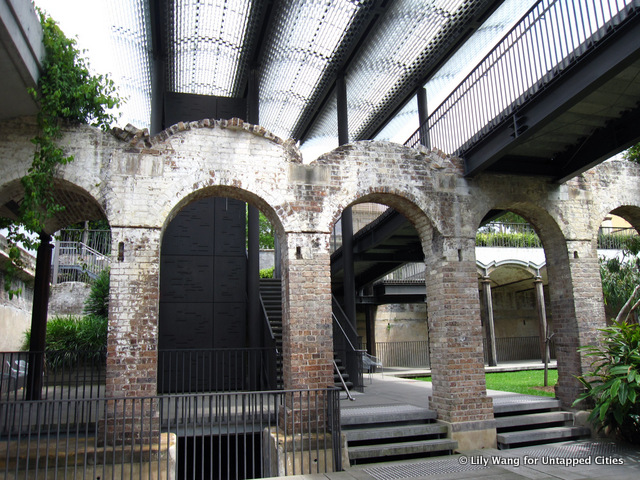
I recently took a tour of the Reservoir Gardens. Walking down the metal stairs into the actual reservoir space feels like entering into a different world. The place resonates with a steam punk feeling of a fallen Babylonian city. The space is defined by rusted metal beams, the brick arches, and hardy wooden pillars set in stone foundations. These elements are softened by the natural plants and flowers, and the gentle sound of the water feature. Finally the space is brought into the modern era by the lightweight metallic roof. The roof floats on top of the reservoir like a linear cloud. In that sense, the space has really been successful in incorporating elements of the past and present.
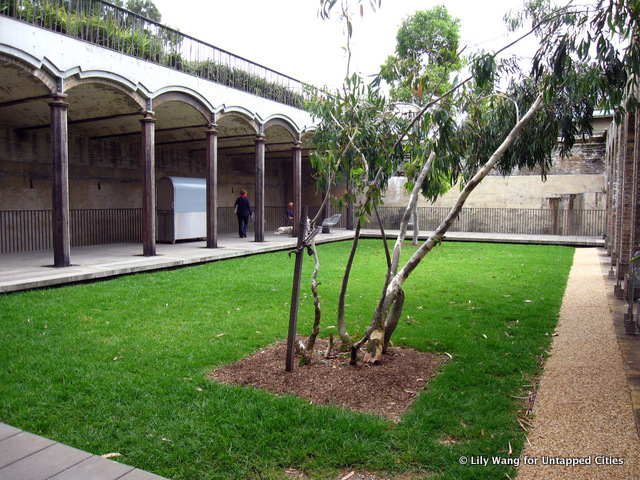
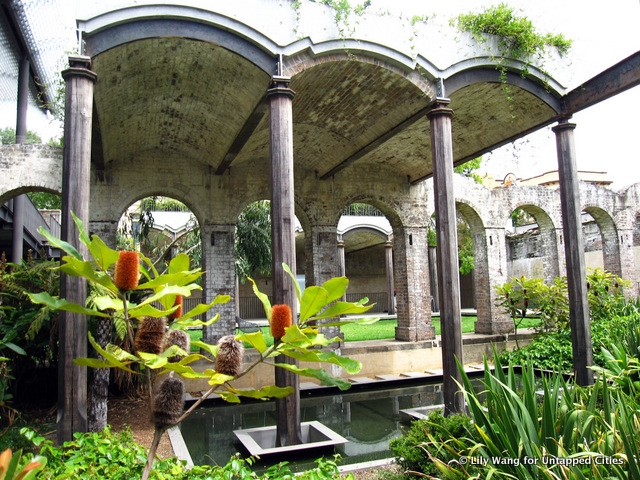
In this sunken space, it seems as if the rumbles of the traffic along Oxford Street is all but drowned out. It feels like a quiet place for relaxation and contemplation. I spotted a man reading the paper with his dog beside him, a couple soaks up the sun on a picnic rug some distance away, and a woman leaning against the brick pillars as she edits a volume of manuscripts. Down here, there’s a mediative mood that compels visitors to listen and observe rather than speak. I stayed awhile and rejuvenated my spirits before heading back up to the street level to rejoin the daily grind.






